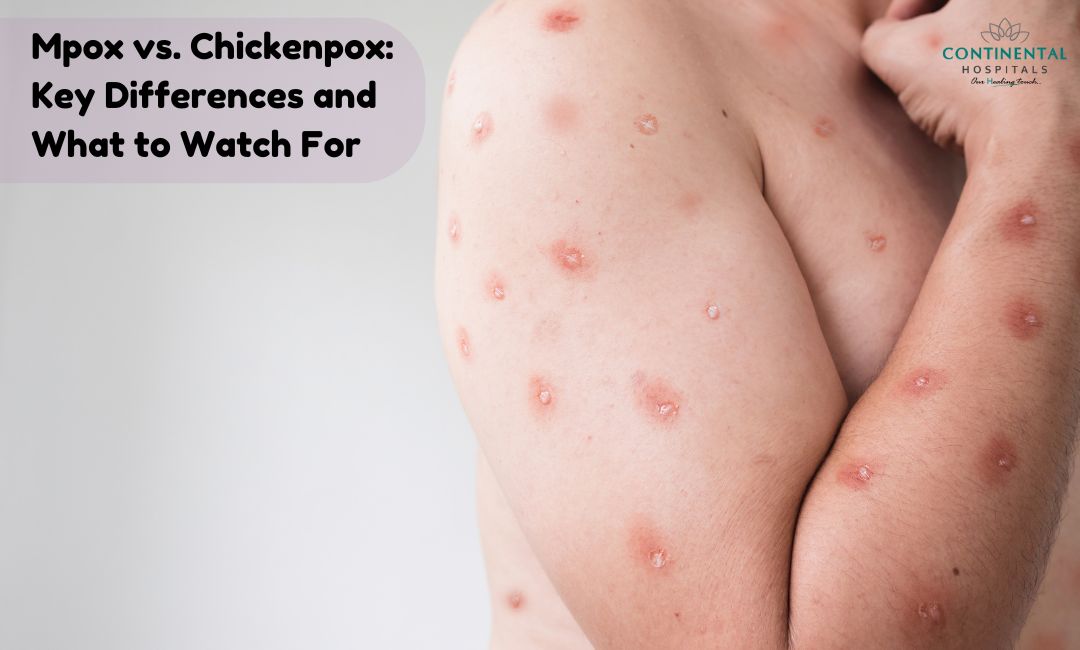Recently, you may have come across mpox—a term that has become more common in global health conversations. How does it compare against the well-known chickenpox? Both are viral infections, yet they have unique features and consequences. This is an overview of mpox and chickenpox, highlighting the latest global and Indian statistics, along with treatment options.
What is Mpox?
Mpox, previously known as monkeypox, is a rare viral illness that has primarily impacted central and west Africa until now. In the past year, some outbreaks have caused global concerns because of the unusual ways the virus. In 2022, the WHO announced that the mumps outbreak was a global health emergency.
Common Symptoms of Mpox
Rash: Flu-like symptoms such as fever, headache, and muscle ache initiate Mpox, which then leads to a rash. The rash usually starts on the face and then progresses to other parts of the body.
Lesions: Unlike chickenpox, which presents small, itchy blister-type lesions, mpox usually presents larger, painful lesions. They progress from papules to pustules, then to scabs.
Swollen Lymph Nodes: Compared to chickenpox, Mpox has swollen lymph nodes more often.
What is chickenpox?
Chickenpox is one of the commonest childhood illnesses caused by the varicella-zoster virus. The trunk gets itchy and spreads to other parts of the body.
Common Symptoms of Chickenpox
Itchy Rash: Small red spots that form into blistering rashes are some of the first signs of chickenpox. These blisters eventually crust over.
Fever: This rash is typically accompanied by a mild to moderate fever.
Fatigue and headache: Although these symptoms may also appear in chickenpox, they are much milder in most mpox cases.
Global and Indian Mpox Statistics Worldwide Statistics
As of late 2023, the Mpox virus outbreak had spread to several other countries outside the African continent. According to the WHO, there have been thousands of reported cases throughout the world, with significant outbreaks happening in the United States, Europe, and other parts of the world. This ongoing spread underline the immediate need for strengthened surveillance and vaccination efforts.
Mpox Outbreak in India
India is no exception, as mpox viruses have also gained a gradual uphill in the country, keeping pace with the rest of the world. With its impact on public health, the mpox outbreak in India has come to light. The number of Mumps cases in the country has been increasing day by day. The health department started taking measures to check the spread of the virus. Recent statistics indicate that the country has been proactive in monitoring and managing virus cases to prevent further escalation.
Key differences between Mpox and Chickenpox
Transmission
Mpox: Contact with infected animals or people can spread Mpox through respiration droplets, direct contact with body fluids, or both.
Chickenpox: Chickenpox is a varicella virus that is highly communicable among children and non-vaccinated adults. It is highly contagious due to droplet spread and direct contact with blister fluids.
Mpox Incubation Period: Symptoms begin within 7 to 14 days of contact.
Chickenpox Incubation Period: Symptoms begin 10 to 21 days after contact.
Duration of Mpox Illness: The symptoms may last anywhere between 2 and 4 weeks.
Duration of Chickenpox Illness: Usually lasts about 1 to 2 weeks.
Vaccine Availability
Mpox Vaccine: The smallpox vaccine provides partial protection against mpox due to the similarity between the two viruses. Additionally, newer vaccines, such as the JYNNEOS vaccine, are available and approved for preventing mpox in high-risk individuals.
Chickenpox Vaccine: Widely available and recommended for children and adults who haven't had chickenpox. It has significantly reduced the incidence of the disease globally.
What to watch for
In light of the mpox outbreak, it is important to be well-informed and prepared. There are several things you should be aware of and prepared for:
Travel History: You should closely monitor your health if you've recently traveled from an area where mpox is known to occur.
Symptom Monitoring: Look out for symptoms like fever, rash, and others described above. Early detection will help prevent complications.
Prevention: Avoid being in close contact with the infected persons and animals.
Treatment Options
Mpox Treatment
For mpox, there is currently no licensed antiviral therapy. The goal of treatment should be to relieve symptoms and avoid complications. The following are some of the available treatment options:
Supportive Care: This includes hydration, pain management, and management of secondary bacterial infections.
Vaccination: Vaccination against smallpox has been effective in preventing mpox infection. Vaccines against mpox are in development and testing; several countries have begun to use the smallpox vaccine as a preventive measure.
Isolation: Infected individuals are kept in isolation and avoided as far as possible in order to contain the virus from spreading.
Chicken Pox Treatment
The treatment for chicken pox usually involves the following:
- Doctors may prescribe antihistamines to alleviate itching.
- Calamine lotion may also be applied on the rash to alleviate the itching.
- In cases of severity, physicians may prescribe antiviral medications such as acyclovir.
Conclusion
The mpox outbreak has drawn global attention, highlighting the importance of understanding viral infections and their differences. While mpox and chickenpox share some symptoms, they differ significantly in terms of severity, transmission, and treatment options. In regions like India, continued vigilance, vaccination, and proper treatment can help prevent outbreaks from worsening. Staying informed is the first step in protecting yourself and your loved ones from these viruses.
Related Blog Topics:
.webp)














